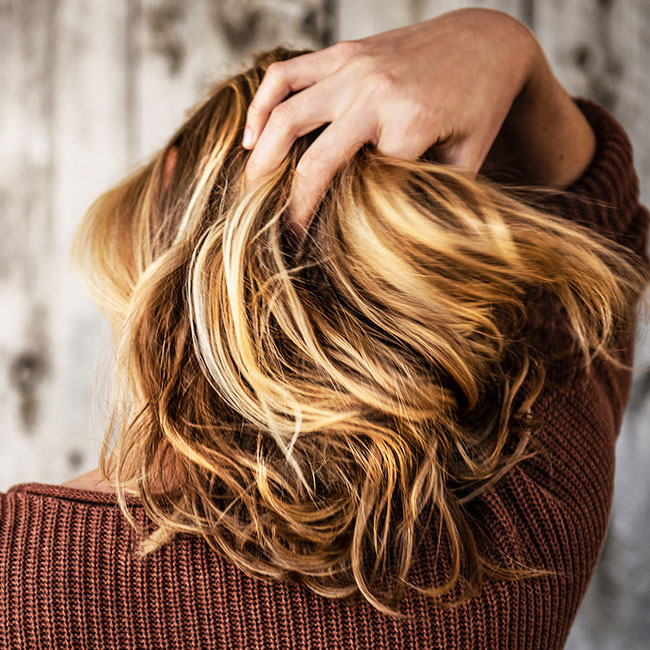
1. Bleaching Down To The Roots
Bleaching or coloring "all the way down to the roots" is a big no-no, Abdullah stresses. "If the hair dye or bleach reaches the scalp, it can cause damage to the scalp, which can then cause hair thinning," she warns. Said agrees, noting that bleaching the hair in this manner "can be extremely damaging and can weaken the hair shaft, leading to breakage and thinning." To avoid this, and "bleaching and coloring improperly," Abdullah recommends always "getting chemical treatments done at the salon" rather than trying them yourself at home. "Thinning can also be caused by other chemical treatments like perms if done incorrectly," she explains.
2. Leaving Dye On For Too Long
Leaving hair dye on for "too long" or using a color that is "too strong" can "damage the hair cuticle," Said notes, and this "makes it more prone to breakage and thinning." He adds that this can "weaken the hair," so it is vital to "give the hair time to recover between color treatments and use conditioning treatments to help strengthen it." Said explains that he always advises his patients that "dying hair can potentially damage the scalp if using hair dye that contains harsh chemicals like ammonia and hydrogen peroxide," as well.
3. Removing Hair Color At Home/ Recoloring With Semipermanent Dye
Another dangerous error to avoid at home is to "attempt to remove hair color without a color remover," Abdullah says, as this "can severely damage your tresses." There are a lot of formulas on the web, she lists, like "vitamin C and shampoo, bleach washes and salt," that often "damage the hair and can cause thinning." It's much better, she notes, if you are coloring at home, to "purchase the color remover from the same line." That way, she adds, "when you're ready to change colors, your hair doesn't come out in the process." Recoloring with semipermanent dye "before the previous color has faded" can cause "too much color buildup, and your strands might break under the weight," Abdullah notes.
Overall, as Said concludes, "there are several coloring or dye mistakes that can cause thinning or thinner hair, including overprocessing, bleaching, using hot tools, and applying color too frequently." The best way to prioritize your hair health is to visit a dermatologist who can assess where thinning stems from and how to treat it. Abdullah also shares that opting for "light brown colors with blonde highlights" as opposed to "ultra-dark colored" hair can make thinning look less obvious and "remove emphasis on your scalp." The more you know!


